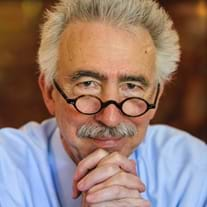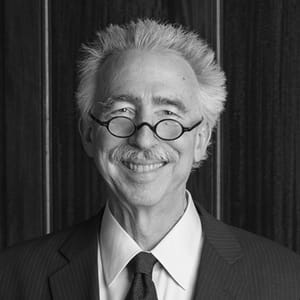Lessons Learned: The Aftermath of a Pandemic
Published June 1, 2021
By Nicholas B. Dirks
President and CEO

When I was first in discussions in early 2020 to take over the leadership of The New York Academy of Sciences from the retiring Ellis Rubinstein, we could still go out to dinner, attend meetings in person, and enjoy concerts and the theater in closed and crowded spaces. Masks were for surgeons in operating theaters and researchers working in labs. We could still enjoy networking at well attended conferences, traveling through crowded airports and train stations, and planning vacations and holiday family gatherings. Although for years I had always mentioned a pandemic as a primary example of a global challenge that would know no borders and require global cooperation, I also knew that the last such pandemic had happened 100 years ago. I confess I had assumed I was being largely rhetorical.
What a difference a year makes.
Now, more than a year after the lockdowns began across the world and in the U.S., we are at last seeing the light at the end of the tunnel. It will still require a leap of faith to predict when life will return to the way it was in 2019, but significant progress has been made during the past several months.
As with most life-altering events, much can be learned when we can take a hard, practical look at what we did wrong, what we did right, and how, with better planning, we might have changed the course of history. And if we’re smart about it, we can use those learnings to prepare a playbook for the next pandemic.
Accept that pandemics and other global catastrophes are here to stay and plan for them.
Much of the spread of COVID-19 in the U.S. can be traced to the lack of a cohesive national response. Poor communications also did not help. Mixed messages from public officials and health experts created confusion, and worse, disbelief that COVID-19 should be taken seriously. “It’s no worse than the flu” was one such frequent comment, along with “something that only old people get,” and the “cure or shutdowns cannot be worse than the problem.” Then there are the “hoax” believers, and the bizarre “treatments”—all fueled by misinformation and conspiracy theories running rampant on social media. We can’t predict what new crises are on the horizon, but it is incumbent upon all government officials to have emergency response plans ready for quick implementation. Aside from the obvious—i.e., having the necessary medical equipment and public health protocols already in place—understanding that social behavior needs to be addressed is just as important as medical intervention in meeting the crisis.
Look at challenges as opportunities for new ideas to blossom.
Like many other organizations whose core business is based on live in-person events, The New York Academy of Sciences had to quickly pivot to virtual forums when we could no longer host actual gatherings. But we have found that our online webinars and virtual conferences have broad appeal to our members—especially those who do not live within easy access of our physical conference location in downtown New York. At some point the in-person meetings will resume, but we will continue to offer the virtual options that will open up our programs to all our members and others across the globe.
Shutdowns have had some benefits.
The past year has been disastrous for many of us, with death and disease rampant both in the U.S. and globally, and with devastating economic effects on certain sectors and populations. At the same time, we learned what we can do with the technological tools on our laptops and in our phones, seen clear skies in polluted cities from Delhi to Beijing, as well as nature venturing out into the deserted streets. The YouTube video of a kangaroo hopping down an empty street in Adelaide was especially poignant. Of course, we cannot keep things shut down forever—we not only miss our social life, we depend on it. But as we consider not just the effects of a pandemic but the escalating threat of climate change, the past 12 months have provided a clear view of how our natural environment can quickly improve if we give it room to do so. We don’t all agree on everything, but we do all live on the same planet — and as the late Carl Sagan pointed out — “Like it or not, for the moment the Earth is where we make our stand.” It will serve humanity well in the future if we could use the lessons of the last year to develop much bolder plans to take on the significant global and planetary challenges before us.
As we look forward to life returning to normal, it is worth remembering that despite all our scientific and technological progress, we were blindsided by a microscopic virus that was exacerbated by polarized politics, and a lack of public understanding and trust in science. It is also clear that the massive disparities of our society and our economy have been magnified by this public health crisis. Scientists must work not only with each other but with social scientists, humanists, and many others, as we seek to find more effective ways to translate our knowledge into enlightened public policy that takes on the full complexity of the human condition.
Fortunately, for the past 200-plus years, The New York Academy of Sciences has been committed to working to bring the best and brightest minds together to develop solutions for our global challenges. It’s a mission I’m proud to embrace as the Academy’s president and CEO.

Nicholas B. Dirks
